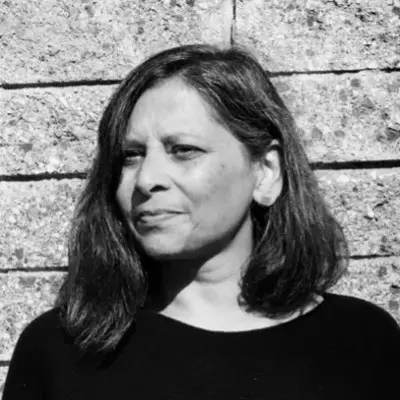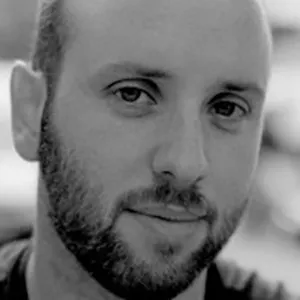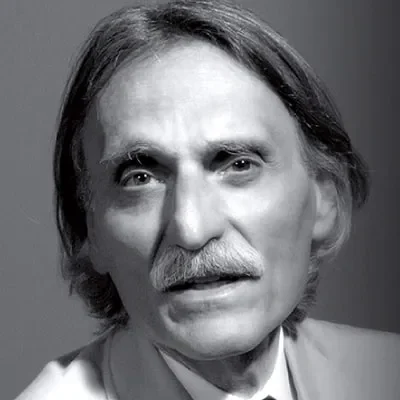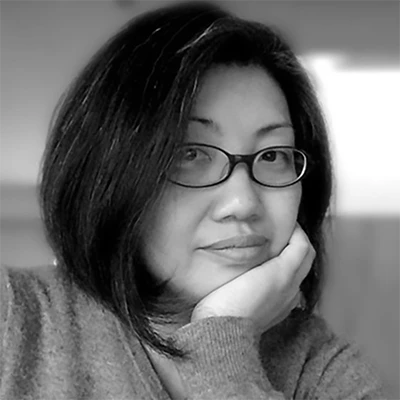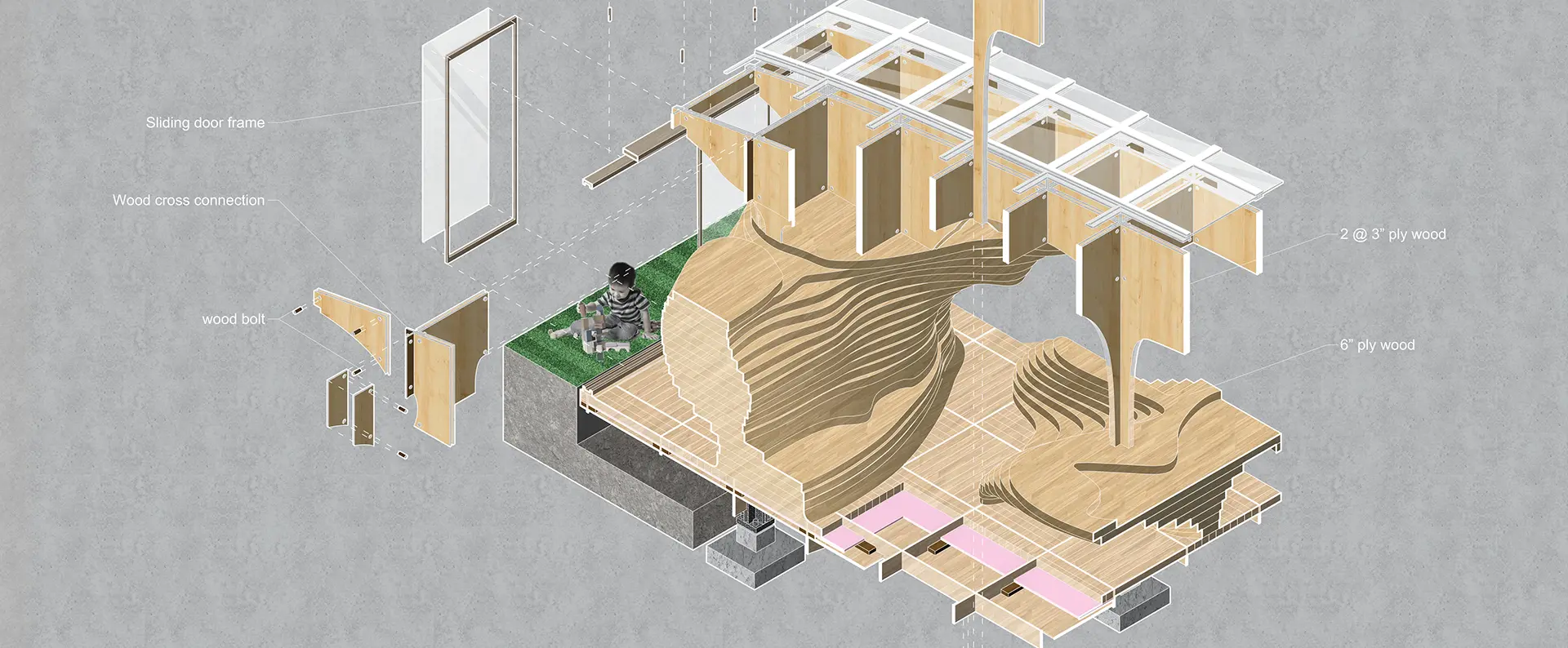
School of Architecture Faculty
Karen YunJin Seong
Director
School of Architecture
Karen Seong is the Director at the School of Architecture, Academy of Art University, where she advocates for under-represented students. She is a proponent of online education as a means to meaningfully diversify the architectural profession. Her pedagogy of examining identity formation in architectural spaces, published by Axel Menges, asks students to tell their personal stories through studio projects. Prior to teaching, she held leadership positions with Skidmore Owings and Merrill in New York and in San Francisco working collaboratively with large international teams on award-winning projects ranging from high-rises to institutional buildings in the US and in the Middle East. She has previously taught at UC Berkeley and has been a guest critic at various institutions in the US and in Korea. She holds a Master of Architecture with distinction from Columbia University and a Bachelor of Arts in Architecture with high honors from UC Berkeley. She was born in South Korea and lived in Malaysia before immigrating to the US at age 19.
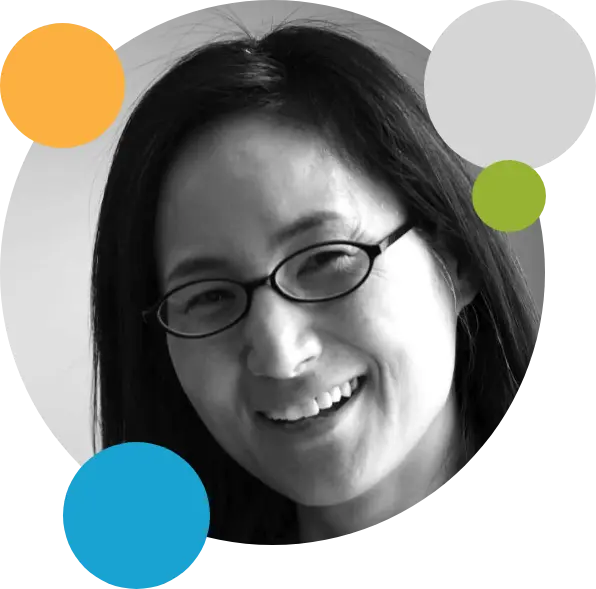
Part-Time Faculty
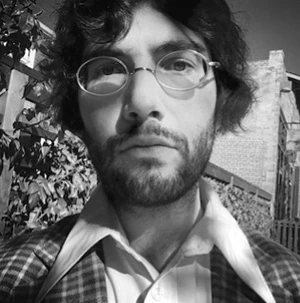

Adam Miller
Digital Generated Morphology
Foundational Design Studio I
Digitally Generated Fabric
Position: Faculty
As Director of PNEU STARS, Adam Miller works on both architecture and ephemeral large installation projects. Since 2014, he has acted as the lead stage designer for the Mosswood Meltdown and Burger Boogaloo music festivals in Oakland, CA hosted by John Waters, where he has completed more than ten scene designs. As Director of PNEU STARS he manages a team of rotating collaborators, proposes budgets, and conceptualizes, fabricates and installs designs. Adam also works independently on both architecture and installation design as Director PNEU STARS, and has recently received a building permit for his design of an ADU in the East Bay. In November 2023, Adam Miller and Soo Ok Han won an RFP competition to design and complete a stage set for Omidyar Network, a non-profit institute by Peirre Omidyar who also founded eBay. In April 2024, he completed an interactive installation at Woodbury School of Architecture titled “Under Pressure” and gave a public lecture on his design practice.
As an architectural project designer working at envelope A+D and Sidell Pakravan Architects, he designed and managed many projects to completion. Including: a ground up office addition and facelift to a 10,000 sf commercial space; a complete home remodel; a backyard cottage for an artist; and others. He has worked as designer on a diversity of projects both private and public, including a public park on a EPA superfund site in Hunters Point, SF; as well as a privately owned public open space in SF; additionally he has designed tenant improvements for several restaurants; a tech retail space including a design for an interactive pneumatic scanning furniture; and a mixed-use housing project in Arizona, amongst others.
Adam holds an M.Arch from UC Berkeley, and undergraduate degrees from Cornell University. He has taught architectural design studios at UC Berkeley, University of Michigan, University of Texas at Austin, and the Academy of Art University. Currently he teaches core undergraduate design and ARH 650 at AAU. As a teaching and research fellow at the Taubman College AUP, University of Michigan, Adam taught both undergrad and graduate level architecture design studios and theory seminars. As part of his research on queerness in architecture, Adam received a grant as well as sponsorship from Joann Fabrics and Mimaki Engineering Co to support a solo exhibition of his work, a warehouse scaled interactive robotic installation titled “I Want to be a Person.”
Adam was the two-time recipient of the Race & Gender in the Built Environment Fellow at University of Texas at Austin, School of Architecture. As a teaching fellow, Adam researched the politics of aesthetics in architecture, taste culture and identification via pedagogy and writing. Adam taught graduate and undergraduates through original theory seminars, and original architecture studios.
As a Co-Editor in Chief for Room One Thousand, a Journal of Architecture, Adam conceptualized and edited the 345 page collected publication “Timeless” for UC Berkeley’s Architecture Journal alongside Alex Spatzier. He wrote and conducted interviews for this volume, fund-raised, and also held a public lecture and design competition which culminated as a public interactive event and celebration.
Adam’s work has received various awards and grants and has been exhibited widely, and his writing has been presented at conferences and published in various architecture and design journals.
Industry Credits:
- Muschenheim Fellow, Taubman College AUP, University of Michigan, 2021-2023
- Race & Gender in the Built Environment Fellow, UT Austin School of Architecture, 2019-2021
- Invited Guest Lecture and Exhibition at Woodbury University, April 2024
- Fellowship Exhibition, Ann Arbor, MI, 2023
- Designed and Installed Faculty Exhibition at the University of Michigan, 2022
- Created public installations at music festivals, working with musicians such as Iggy Pop, DEVO, and filmmaker John Waters
Websites:
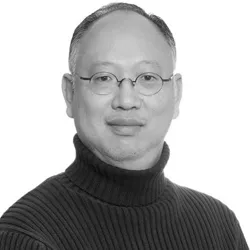

Archie Woo
Tectonics: Code Analysis and Building Envelope Documentation
Position: Faculty
Archibald Woo is the Principal X Team Architecture + Design, he has 31 years of experience as an architectural design professional, 26 of which have been focused mainly on complex and technical projects in the San Francisco Bay Area, for biotech and educational research organizations, for major healthcare providers and also for various Bay Area school districts. Prior to moving to San Francisco, Archibald had worked as a designer in Hong Kong focusing on large-scale projects in different parts of South East Asia.
Archibald has led numerous projects through all phases of the project delivery process, from feasibility studies and programming, through planning, design and documentation to construction project close out. He has demonstrated successes in providing creative solutions to complex projects with demanding schedules and tight budgets and has represented clients in difficult approval processes, while always delivering exceptional architecture that combined innovative design with strong technical know-how, providing excellent services and client satisfaction throughout his career.
Archibald has a strong interest in the teaching and mentoring of architectural students and emerging professionals, Archibald has taught undergraduate and graduate level classes in architecture and interior design at University of California Berkeley Extension, City College of San Francisco, and the Academy of Arts University in San Francisco. Since 2003 Archibald has also been teaching a quarterly two-day seminar for the San Francisco chapter of the American Institute of Architect, helping candidates pursuing licensure through the California Supplemental Exam process. At AIASF, Archibald has also co-chaired their architect licensing and mentorship committees. While with the mentorship committee he implemented a pilot group mentorship program that has been a model for AIA chapters in other parts of the country, for his work with AIASF, he has been awarded the chapter’s Presidential Commendation in 2006 and again in 2011.
Industry Credits:
- AIASF, Community Alliance Award for Education, 2016
- AIASF, Presidential Commendation for work on California Supplemental Exam Seminars, 2006
- Taught California Supplemental Exam Seminars at AIASF from 2003 to 2020, helping thousands of candidates obtain their architect license in California.
- AIASF, Presidential Commendation for work on AIASF Mentorship Program, 2011
- Co-Chaired the AIASF Mentorship Committee and established a pilot group mentorship program that seeks to build a network for established and emerging professionals beyond the office environment. The program had been a model for a lot of AIA chapters around the country
Website:
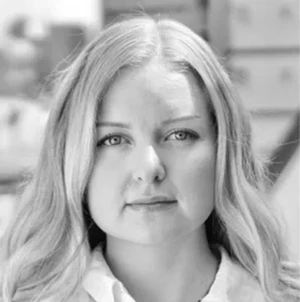

Ashley August
Advanced Design Studio I – Design Process and Morphology
Position: Faculty
Ashley is the co-founder of Nanka, an architectural practice that was founded in 2020 in Tokyo. Nanka has built projects in Japan and the United States that include sneaker stores, cabin renovations, and dance studios. Ashley is a Registered Architect in California, holds a Master of Architecture 1 from Harvard Graduate School of Design, and a Bachelor of Arts in Architecture from University of California, Berkeley. She has experience working in firms including The Los Angeles Design Group (LADG), AS_IS, and Atelier Bow-Wow in Japan. She has taught design studios at the University of California, Berkeley and the Academy of Art University, and she has taught courses at Harvard including Core Prep, Design Discovery, Digital Sketching, and Digital Media.
Industry Credits:
- Research Grant: Harvard Asia Center | Cambridge, MA
Websites:
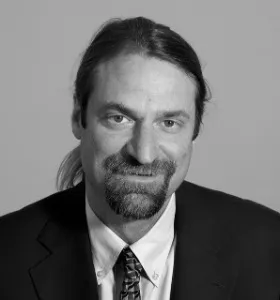

Carl Wilford
Structures: Wood and Steel
Structures: Concrete, Masonry, and Tensile Systems
Structures
Position: Part-time Structural Engineering Instructor
Carl Wilford, PE, SE was a Vice President at Thornton Tomasetti. He joined 1993 and brings 25 years of structural engineering experience, with an emphasis on education and healthcare projects. Carl has extensive experience providing structural engineering for new buildings and seismic rehabilitation of existing buildings. He spent three years in West Africa, designing and managing the construction of education facilities and drinking water systems. His areas of expertise include commercial, education, healthcare, and construction administration. He has served as project manager for numerous large, multi-building campus projects. Carl is a licensed civil and structural engineer in California, and he serves as a registered Safety Assessment Program Evaluator for the California Emergency management Agency. He has also completed the Structural Plan Review course for the Division of the State Architect (DSA) and has served as a third-party plan reviewer for the DSA and OSHPD since 2006 Carl had been an active member of a number of professional organizations including the Structural Engineers Association of Northern California (SEAOC,) the American Concrete Institute (ACI) and the American Institute of Steel Construction (AISC) for many years.
Industry Credits:
- Licensed Structural and Civil Engineer
- Vice President Thornton Tomasetti Structural Engineering group (retired)
- Structural Engineer-of-Record for over 50 healthcare and education projects
- Provided a safe water source for multiple villages in Mali, West Africa by designing and leading local volunteer construction teams to dig deep, reinforced concrete wells
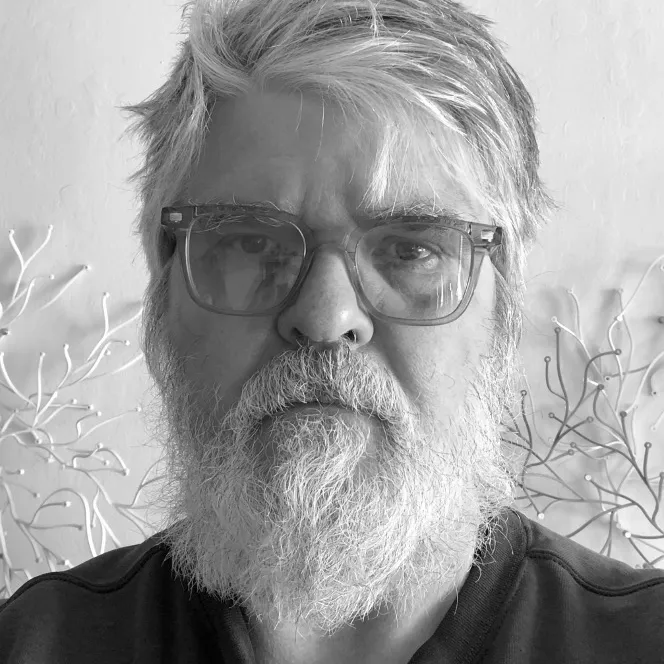

Clifford H. Minnick
Foundational Design Studio I
Design Process and 2D Media
Introductory Design Studio 2
Position: Faculty
Chip Minnick is a California-licensed architect working in the Bay Area. As partner at his own Oakland-based firm since 2008, F36 Design, he has generated an extensive portfolio of thoughtfully executed work including both theoretical and built projects that separate themselves through good design and outstanding execution. Even in smaller projects, the work evokes a much larger societal subtext. Unbuilt projects clearly show the possibility to scale up the themes and explorations that the built work has introduced. Among the firm’s notable projects are a four-story Haight-Ashbury Victorian remodel in San Francisco, a three-story residential remodel on Wildwood Avenue in Piedmont, the mixed-use Goldberry Building renovation and addition in Presidio Heights, San Francisco, and Market Square speculative offices in Oakland. Periodic design consulting includes services for shipping container housing projects in Guam and Haiti (w Studio Bondy), and visiting artist Housing for the Berkeley Repertory Theater (w Motzkin Architecture). Prior to starting F36 Design, Chip was an Associate at Schwartz and Architecture, a Deign Consultant at IDEO, a project designer for Sagan Piechota Architecture, and a Designer for Frank O. Gehry and Associates.
Chip Minnick has a 20-year teaching record and served as a Senior Adjunct Professor at the California College of the Arts in San Francisco. Over the years, he has taught numerous courses within the Upper-Level Interdisciplinary Studios (UDIST) and the Architecture Division in the Department of Interior Design. Since 2012, Chip has served as a part-time faculty member at the Academy of Art University.
Chip completed his Master of Architecture at the Southern California Institute of Architecture (SCI-Arc) in 1998. His thesis, titled “Nike Shelter,” was supervised by advisor Neil Denari and reader Kazys Varnelis. This work was published in the SCI-Arc Journal Offramp 7 Detours in Spring 2000 and cited in the MIT Journal Thresholds 15, Consumer Culture by Kazys Varnelis in Winter 1998, as well as in “Architecture, Ethics and Globalization, Discussion 6,” edited by Graham Owen in 2009. During his time at SCI-Arc, he was awarded the Michael Winter Scholarship in 1997 and the AIA Henry Adams Certificate for General Excellence. Additionally, his LL1 Chair in Modernesque was exhibited at Westweek in the Los Angeles Convention Center. He completed his undergraduate studies at the Boston Architectural College (BAC) in 1993. Chip began his academic journey at Edinboro University of Pennsylvania in the Bachelor of Fine Arts program, majoring in sculpture, from 1982 to 1984.
Industry Credits:
- California Architectural Licensure
- AIA Henry Adams Certificate of Merit, SCI_Arc
- Michael Winter Scholarship, SCI_Arc
Websites:


Eric Reeder
Construction Docs./Bldg. Codes
Advanced Design Studio III – I
Position: Faculty
Eric Reeder’s work explores architectural adaptation and urban speculation, emphasizing an infrastructural agenda in architecture. He believes architecture should integrate broader contextual and sustainable systems beyond style and form. His research and projects focus on housing, food, public urbanism, and adaptive reuse strategies.
Mr. Reeder practiced and taught in Seoul, South Korea, for nearly a decade before founding ERa in San Francisco in 2018. He has lectured at UC Berkeley’s College of Environmental Design and has taught at the Academy of Art University’s Graduate School of Architecture for nearly a decade.
He studied urban design in Prague through the University of Colorado, earning a Bachelor of Environmental Design, and later received his M.Arch from UC Berkeley. In 2015, he published “Adaptations Seoul” and has won several design awards, participating in international and domestic exhibitions with publications in North America, Europe, and East Asia.
Education:
- Master of Architecture University of California Berkeley, College of Environmental Design
- Bachelor of Environmental Design, University of Colorado, Boulder
Industry Credits:
- Invited artist exhibitions in South Korea, Peoples Republic of China, and throughout North America
- Published articles in The US and South Korea
- Invited critic at Universities throughout North American, Asia and Europe.
- Design Awards in South Korea, the UK and the US.
Website:
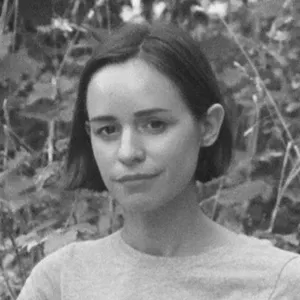

Kate Bilyk
Introductory Design Studio 2
Position: Part Time Faculty
Kate Bilyk is an architectural designer, entrepreneur, educator, and thinker. Her work is focused on the betterment of housing in the United States, on enhancing accessibility to quality architectural planning and redevelopment of existing structures in Europe, and on opening of the discipline of architecture to a wider public.
Kate Bilyk was born in Ukraine, received her Bachelor of Architecture at California Polytechnic University, Pomona and her Master of Architecture at Princeton University. She has worked in a number of practices over the years – Johnston Marklee (Los Angeles), Barkow Leibinger (Berlin), and Casper Mueller Kneer (Berlin), among others. She has also held a series of teaching appointments, most recently as Lecturer at the Technical University in Berlin and Assistant Instructor at Princeton University School of Architecture, as well as has done archival, exhibition and conference work with such institutions as College of Environmental Design at Cal Poly Pomona, Neutra VDL Studio and Residences, and Princeton University School of Architecture.
Kate Bilyk is currently developing her atelier as a place for thinking and engagement with the discipline of architecture, as well as setting up two other projects in the U.S. and Europe.
Website and Publications:
katebilyk.com
Returning to the Neighborhood
Building as Continuous Quarry
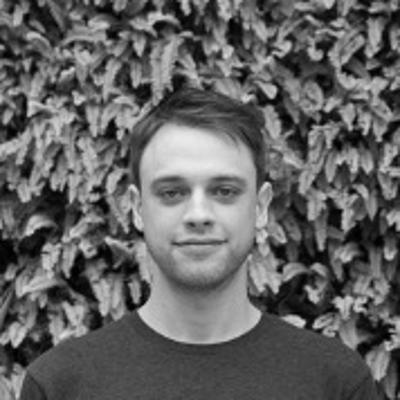

Kris Menos
3D Digital Modeling
Position: Portfolio Specialist
Industry Credits:
- Co-Founder and Creative Director, Human Being Design, 2017 to present: a transdisciplinary practice at the intersection between individual and environ, engaging in both self-initiated and commissioned projects, including: housing, installations, everyday items, and memorial artifacts
- Graduate Fellowship, Massachusetts Institute of Technology (MIT) Department of Architecture, 2015-2017
- AIANY Architecture School Exhibition at the Center for Architecture Gallery, 2013
- James Britton Memorial Award for Outstanding Thesis and Citation for Excellence in Thesis Design, Syracuse University School of Architecture, 2013
- School of Architecture Scholarship, Syracuse University, 2006-2012
Website:
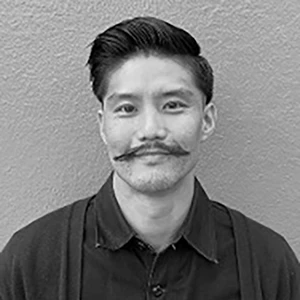

Ryan Hong
Studio 1: Conceptual Design Studio
Position: Part Time Instructor
Architecture school is fun. The academic environment during my architectural education, within the design studios and group discussions, was markedly distinct from my prior experience. Profound ideas and provocative dialogue were encouraged. The relationship between instructor and student, and among the students, created both a collaborative and competitive studio culture where novel ideas and innovation flourished. Academics and learning is deeply personal for me, I am constantly in pursuit of bettering myself as an architect and as a person. When creativity and inspiration are curbed, people make safe choices and they hold back. I want to teach students to be brave, fearless, to make strong choices, and to prepare them to experience various perspectives that architecture offers.
My role as a teacher is to guide ideas and speculation through representational mediums. Students will be challenged and encouraged to explore their ideas and to be critical of their own work as well as the work of their peers. It’s important for students to explore their ideas and come to their own conclusions as they welcome new perspectives.
Industry Credits:
- Registered Architect in California – California Architects Board: 2019
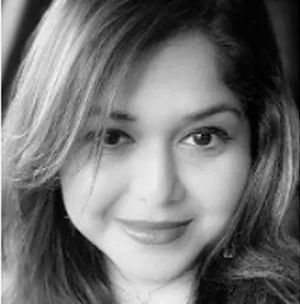

Shahzia Sarwar Shazi
2D Digital Visual Media
Position: Part-Time Faculty
Industry Credits:
- Guest speaker presenting 2D and 3D Visualization in Urban Design and Planning at the Upstate New York APA Chapter Board visit to the University at Albany, SUNY, 2018.
- Won the Arizona Builder’s Alliance (ABA) Portfolio Competition Award 2009: University of Arizona, Tucson Arizona
- Graduate Tuition Scholarship, 2008 & 2009: University of Arizona
- Graduate Fellowship Award 2008 & 2009: University of Arizona
- University Merit Scholarship, 2002 & 2003: BRAC University, Department of Architecture
Website and Publications:
https://www.shahziasarwar.com/
- Shahzia S. Shazi, Mark.P Frederickson, R.Larry Medlin, “Minimizing Urban Sprawl through Open Space Design Strategies: The Case of Tucson, Arizona”, The International Journal of Architectonic, Spatial & Environmental Design Volume 6, 2013.
- Kamrun Nahar, Sanwar A. Sunny, Shahzia S. Shazi, “Land Use Requirement and Urban Growth Implications for the Production of Biofuel in Bangladesh”, Canadian Journal on Scientific and Industrial Research Volume 2, No. 6, June 2011.
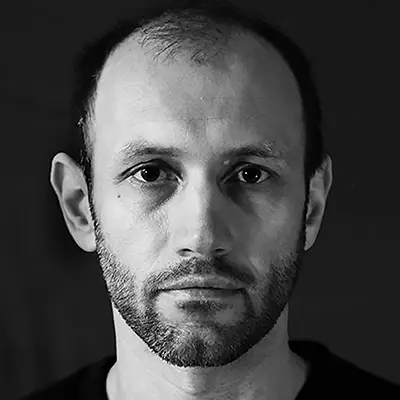

Dan Hogman
Projective Drawing and Perspective
Position: Faculty
Dan Hogman is an architect, illustrator, and educator, passionate about the visual exploration of architectural concepts, urban scenes, and historical spaces. His drawings enjoy applicability across a wide range of projects, from architectural high-rise design concepts and hospitality resorts to interior commercials and Hollywood movie sets.
Dan’s work has been exhibited with the SFMOMA, the AIA, and numerous private galleries. Dan is a Registered Architect (WA #10221), holds NCARB certification, and is a LEED Accredited Professional. An active member of the American Institute of Architects, Dan serves on the Board of Directors at the California Chapter. Apart from his design practice, he serves as faculty with the Academy of Art San Francisco, teaching drawing studios and drawing classes. Dan holds a Master of Architecture degree from the AAU, San Francisco, and a Master of Arts from Harvard University.
Dan creates dynamic sketches of urban life in cities worldwide. When he’s not working as an architect or teaching drawing at the Academy of Art University, he’s traveling to destinations like Hong Kong or Paris to capture the essence of historical architecture.
Dan has contributed drawings of the Crown Building, Lantern House, and Una Miami to LX Collection, played a significant role in shaping San Francisco’s skyline with his work on 181 Fremont. Designed by Heller Manus Architects, this luxury high-rise has garnered more accolades than many other buildings in the United States. Its commendations include Excellence for Best Tall Building (200-299 meters), the MEP Engineering Award, the Structural Engineering Award, the Fire and Risk Award, and the Geotechnical Engineering Award.
However, Dan Hogman is perhaps best known for his sketches, which he shares regularly in daily vlogs on Instagram and YouTube, where he made a name for himself and amassed quite a viral following. His work is published widely.
Websites:
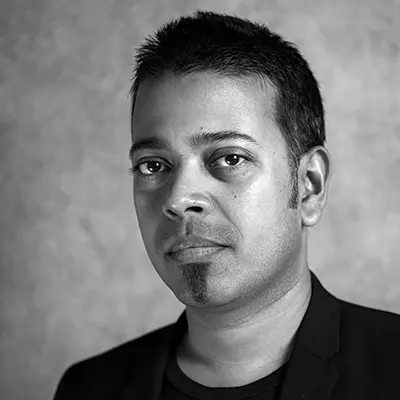

Aurgho Jyoti
Architectural Tectonics
Advanced Design Studio II – Concept, Context, and Typology
Position: Faculty
Aurgho Jyoti is the Founder and Creative Director of AUR /Architecture Urbanism Research LLC, an international architecture practice operating out of New York and New Delhi. His work addresses the notion of time in architecture, creating interventions that provide ‘spatial specificity’ and ‘temporal continuity.’ He holds an M.Des in Architecture and Technology from Harvard Graduate School of Design, and an M.Arch-II in Architecture and Urbanism from Cornell University as a Tata scholar. He has conducted research on housing and materials at MIT Media Lab and Harvard University. He holds a B.Arch with distinction from SPA, New Delhi.
Aurgho previously worked as a Project Lead and Senior Architect for internationally acclaimed offices, which include SOM, OMA/Rem Koolhaas, Gehry Technologies, Studio Fuksas, and 3Gatti Architecture Studio. He is a licensed architect in the US and India and a member of the American Institute of Architects. With a cross cultural international experience, he has lived and worked in New York, San Francisco, Los Angeles, Boston, Rome, Hong Kong, Shanghai, New Delhi and Calcutta, on architecture projects across the US, China, Italy, France, Georgia, Japan and India. His projects span high rises, airports, institutional and cultural buildings. Some of his significant projects include Sea-tac Airport – International Arrivals Facility, Transbay Block 9 Residential Tower and Research Center for UCSF in San Francisco, and Poly Tower in Chengdu.
As an educator he serves as an Instructor at the School of Architecture, Academy of Art and has been a Teaching Assistant at Harvard and Cornell, and a Visiting Lecturer at Delhi College of Arts. He has been an Invited Guest Critic at Harvard, Stanford, Cornell, UC Berkeley, California College of Arts, IE University Madrid, University of Tennessee Knoxville, Academy of Art, Wentworth Institute of Technology, and University of Hong Kong.
Aurgho’s works have been published and exhibited in the US, UK, Netherlands, Denmark, Spain, Austria, Turkey, and India, at venues which include, amongst others, Seattle Architecture Foundation, Heritage Museum in Astoria, Autodesk Gallery in San Francisco, Harvard University, Alliance Francaise Delhi, and India Habitat Center Delhi. He has been featured in The Wire, Dezeen, The Times of India, Indian Express, India Today, and The Telegraph. Aurgho’s awards include ’20 Under 35′ by Alliance Francaise Delhi, SOM Prize in Architecture Finalist, Special Mention in Evolo International Competition, New York, and National Finalist for Bhopal War Memorial and Ujjain Planetarium.
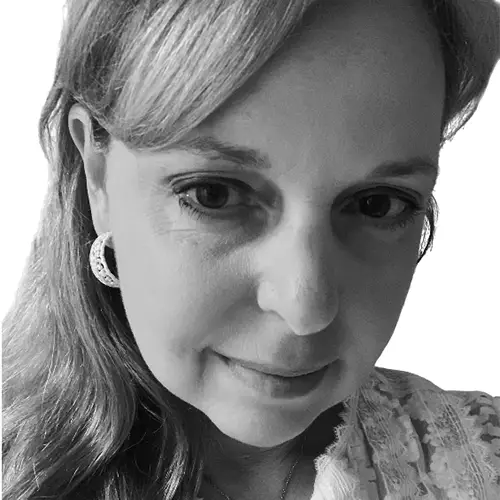

Alexandra Neyman
Studio 3: Site Operations and Tectonic Systems
Position: Instructor
Alex holds both a Master of Architecture and a Bachelor of Science in Architecture from the University of Michigan Taubman College of Architecture and Urban Planning. She also has strong background in Critical Theory and History of Art from the University of Michigan. Alex was born and raised in Chișinău, Moldova, a former Soviet Republic.
Alex has a bit over 25 years of professional experience in the field of architecture: ranging from housing projects to libraries and schools to small scale residential remodeling and renovation. She has worked in multiple architectural offices and has taught architecture at the University of Michigan in Ann Arbor. Alex is currently teaching architecture at the Academy of Art University in San Francisco. Her practice, agglab, a collaborative interdisciplinary design and research practice focused on competition architecture and design work, design installations, architectural publications, lectures and workshops. Agglab pursues experimental methodologies that are initially influenced by concepts derived from systems thinking and specific observations extracted from basic biological behaviors such as genetic variation.
Alex’s experimental research is invested in the development and production of an array of affective architectural environments through generative architectural tectonic language, both formal and methodological, that is fluctuating between growth and regeneration through digital and analogue algorithmic techniques of design and fabrication. The processes developed diverge from specific typological classification established in singular design fields, yet are always endowed with material architectural tendencies. Logics are cultivated through systematic processes, and examined based on the production of evolutionary traits. Formal invention is evaluated through the assembly of design outcomes.
Website:
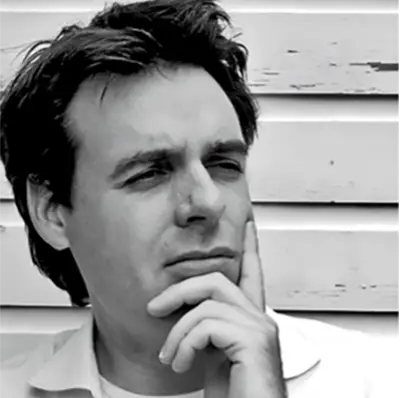

Jason Austin
Studio 2:Spatial Ordering/Form
Studio 10:Final Thesis Project
Position: Faculty
Jason Austin has taught architecture, landscape, and urban design studios at both undergraduate and graduate levels at universities on both coasts. His teaching experiences align with his strong understanding of urban design, systems and network-thinking and built structures as they relate to the constructed landscape and the physical, social and cultural forces that shape our built environment. His experience coordinating foundation design studios as well as advanced upper-level studios has equipped him with a set of teaching skills with great range and depth and an ability to teach a diverse student body. Jason’s years of teaching experience and curriculum development at Drexel University instructing foundation studios, vertical studios and advising thesis students have provided him with an ample resource and exploration of teaching and working within a range of site types – from rural border conditions to blighted urban neighborhoods.
Jason Austin received his professional degree in Architecture from Cornell University, where he was awarded a Charles Goodwin Sands Memorial Silver Medal for his undergraduate thesis. He also attended University of Pennsylvania and received his Master of Landscape Architecture. Professional design and construction experiences include the offices of SOM in New York, Atkin Olshin Schade Architects in Philadelphia and development company Letterman Inc in Carlisle, PA.
Jason was previously an assistant professor at Drexel University’s Department of Architecture, having also been an adjunct faculty member at the Landscape Architecture Department at University of Pennsylvania (Penn Design) and the Tyler School Department of Architecture at Temple University, and a guest design critic at Cornell and Lehigh Universities.
With Aleksandr Mergold, he co-founded A+M Austin + Mergold in 2008 to pursue residential, commercial, landscape, and urban design projects. Jason Austin is a LEED Accredited Professional.
Website
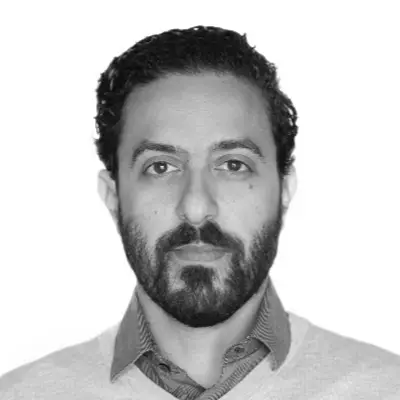

Rebal Knayzeh
Studio 1: Conceptual Design Studio
Studio 2: Spatial Ordering and Hybrid Programs
Studio 4: Assembly Building & Context
Programming and Culture
Position: Instructor
Industry Credits:
- M’KT’B West, 2021-Present
- Studio VARA, 2013-2021
- MAI, 2012-2013
- dxb-lab, 2007-2009
Licenses/Registration:
- California C 38135
Selected Publications and Research
- “Hybridity as Core Studio.” Initiations: Practices of Teaching 1st Year Design, Cyprus Nicosia, 2021
- “Dubai Reconsidered.” Architecture Film Symposium, Texas A&M University, College of Architecture, 2019
- “Along the Line: Exploring the Metro Potential.” Videography public exhibition. Architecture Week, Australian Institute of Architects, Urban Screenings, 2017
- “Urban Islands: Mapping and Emerging Spatial Order.” 4th International Biennale Rotterdam, 2009
Professional Memberships:
- NOMA
- AIA
- SPUR
- TAL
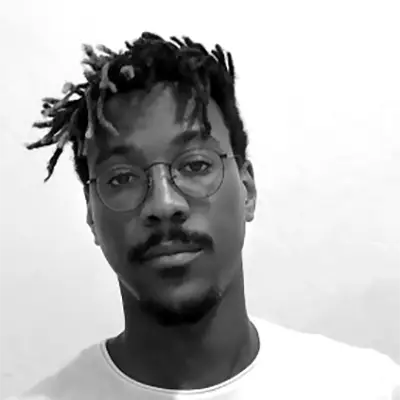

Kevin Bernard Moultrie Daye
Position: Faculty
Kevin Bernard Moultrie Daye (KBMD) curates, designs, fabricates, theorizes, and teaches. Recently, He was the inaugural Spatial and Racial Justice Fellow at Taubman College of Architecture and Urban Planning at University of Michigan, Ann Arbor. He has worked as a designer and coordinator on a diverse set of projects across the AEC industry such as: the AIA National Headquarters Renewal, the San Francisco Marin Food Bank and the Monterey Bay Aquarium. His physical work has been exhibited at institutions such as the Museum of Contemporary Art, Detroit, and the Gray Area Foundation for the Arts,San Francisco. And his theoretical work can be found in publications such as The Funambulist, Domus, Architect Magazine, WIRED, Disc.Journal and Failed Architecture.
His work uses Quantum/N-Dimensional thinking as a framework to explore issues of culture, climate, class and chaos in the built environment. He believes better ways of living are possible, and he believes architecture has a role to play in crafting them.
Websites:
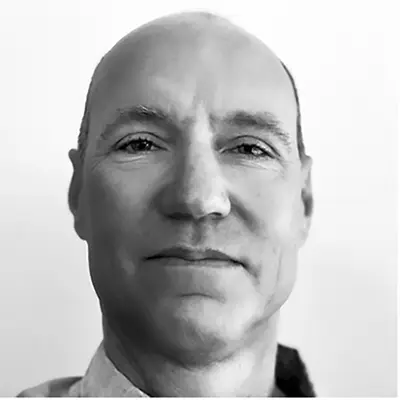

Paul Burgin
Studio 2: Spatial Ordering/Form
Position: Faculty
Prior to founding Paul Burgin Architecture in 2016, Paul Burgin worked as a senior associate in the San Francisco architectural firm Jim Jennings Architecture for over 12 years. During this time he acted as Project Architect for a number of notable projects, including the Pebble Beach Residence, one of Architectural Record’s 2020 Record Houses; Yountville Hill Winery; the Carmel Residence, one of 2015’s Record Houses; Art Pool and Pavilion (a collaboration with the artist James Turrell), and Lanikai Residence.
Previously, Paul worked in San Francisco architecture firms Schwartz and Architecture and Zack/deVito Architecture. He has taught design studios at the Academy of Art University in San Francisco and UC Berkeley. He has served as a design critic at UC Berkeley, California College of the Arts, Academy of Art University, and USC.
As an undergraduate and graduate student at UC Berkeley, he studied with noted architects Stanley Saitowitz, Mark Mack, Adele Naudé Santos, and Michael Bell. Upon graduation, Paul worked for David Raphael Singer Architects in La Jolla on residential and museum projects, including the renovation of the Museum of Photographic Arts in Balboa Park, and several projects with the Museum of Contemporary Art San Diego. He received his BA Architecture in 1992, Masters in Architecture in 1996, California license in 2000, and his LEED certification in 2009.
Paul grew up in San Diego, the son of Swiss academics in the fields of computer science and marine biology. When he is not designing buildings, Paul is usually out surfing and exploring the cold waters of Northern California. He lives in Santa Cruz with his wife Claudia, son Dax, and cats George and Greta.
Websites:
